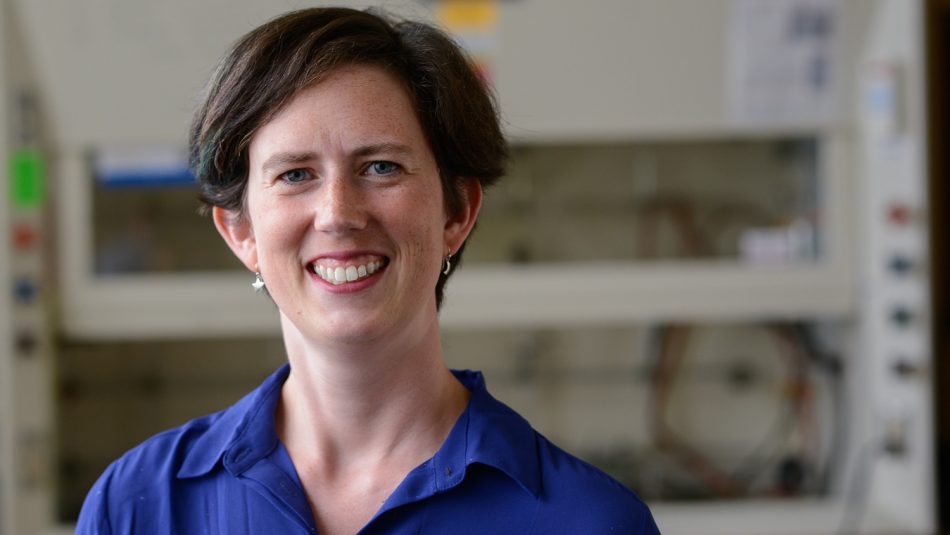Quantitative and Computational Developmental Biology Mary Elting
Associate Professor, Physics
Mary Elting joined NC State in August 2017 as a Chancellor’s Faculty Excellence Program cluster hire in Modeling the Living Embryo. An assistant professor in physics, Elting investigates how biological molecules self-organize to perform essential mechanical tasks across length scales — from the molecular to the cellular to the tissue or organismal. In particular, she focuses on the organization of the microtubule cytoskeleton in the mitotic spindle. As a cellular biophysicist, she uses tools that include quantitative fluorescence microscopy, mechanical and genetic perturbations such as laser ablation and molecular engineering, and mechanical modeling.
Elting obtained her bachelor’s degree in physics as a Park Scholar at NC State. She went on to graduate school at Stanford University, where she obtained her Ph.D. in applied physics in the laboratory of James Spudich. There, she trained as a single molecule biophysicist, modularly engineering myosin molecular motors to explain how molecular structure leads to mechanical function. As a postdoctoral scholar in Sophie Dumont’s lab at University of California, San Francisco, she moved from the molecular to the cellular length scale, probing physical forces present during cell division. She developed new mechanical assays to target in live cells the architecture of the mitotic spindle — the cellular machine that segregates chromosomes. Using these tools, she characterized the spindle’s capabilities for mechanical redundancy and self-repair, which allow it to maintain structural and functional robustness during cell division — for example, in a mechanically active tissue. She has taken an interdisciplinary scientific approach throughout her graduate and postdoctoral career. At NC State and in particular as a faculty cluster hire, she looks forward to continuing to bring together collaborators from biology, physics, engineering and other fields.

